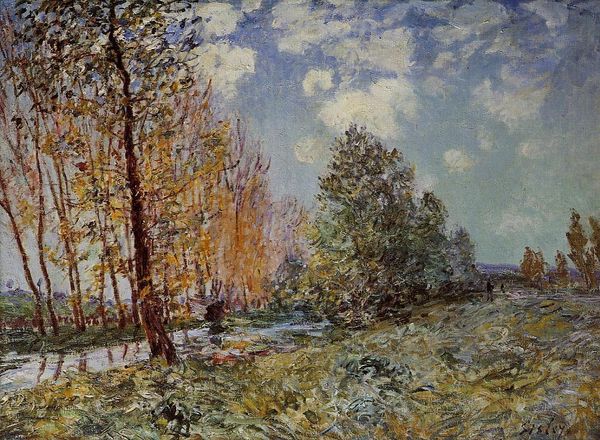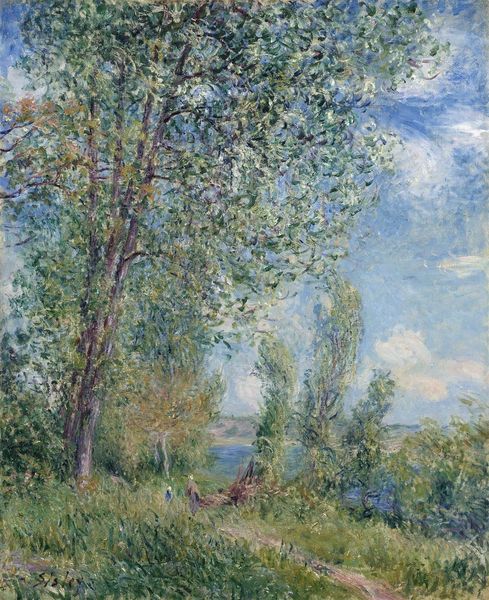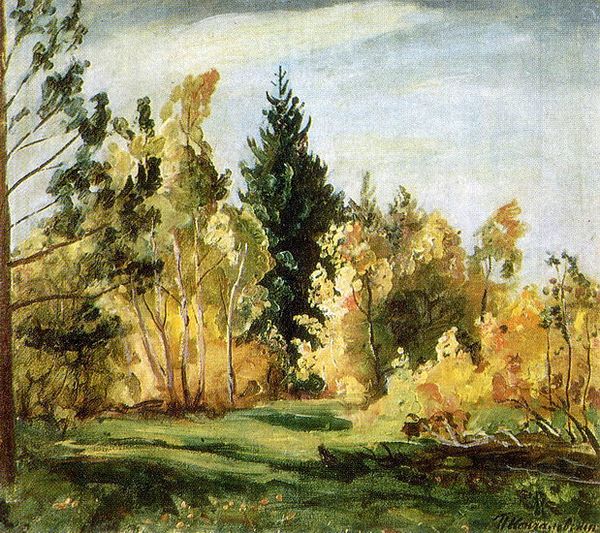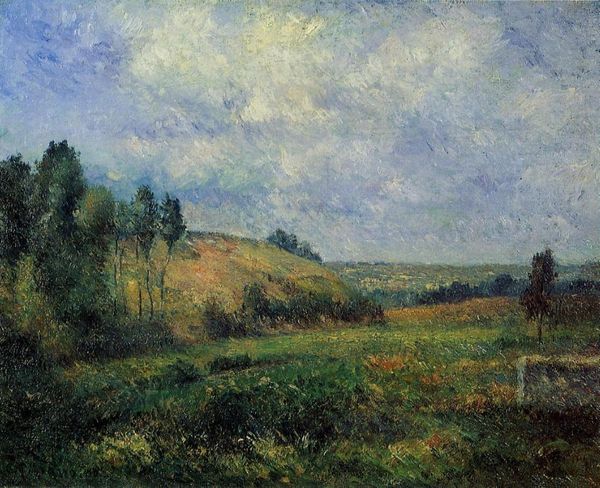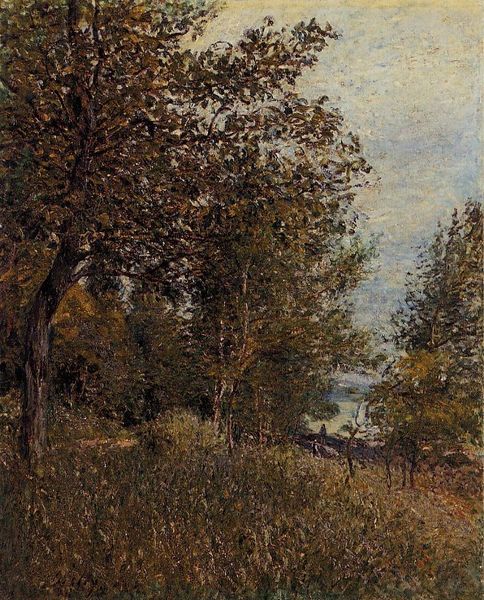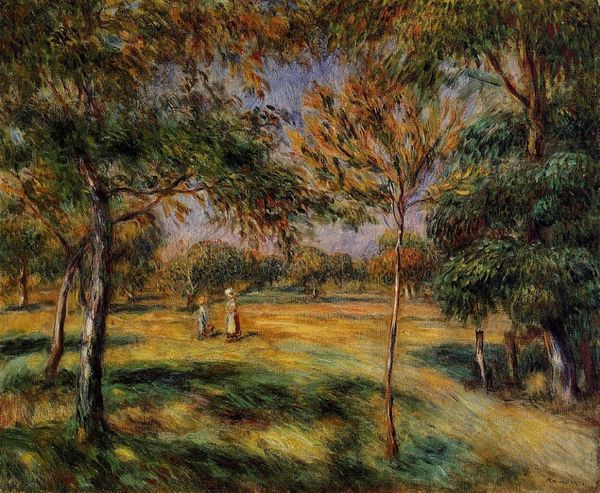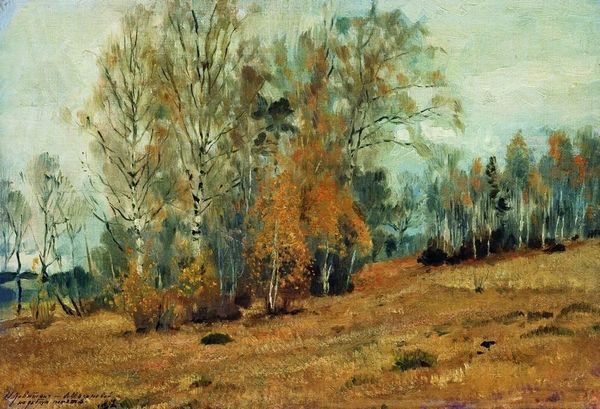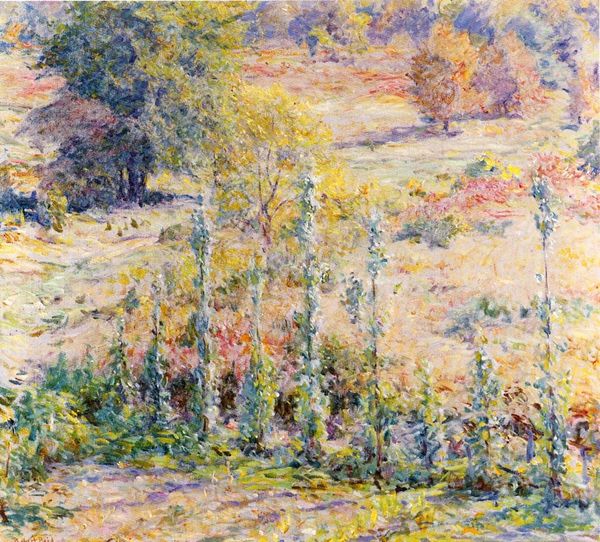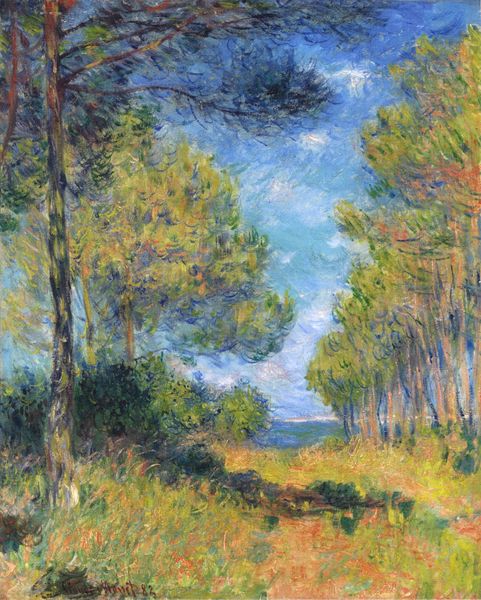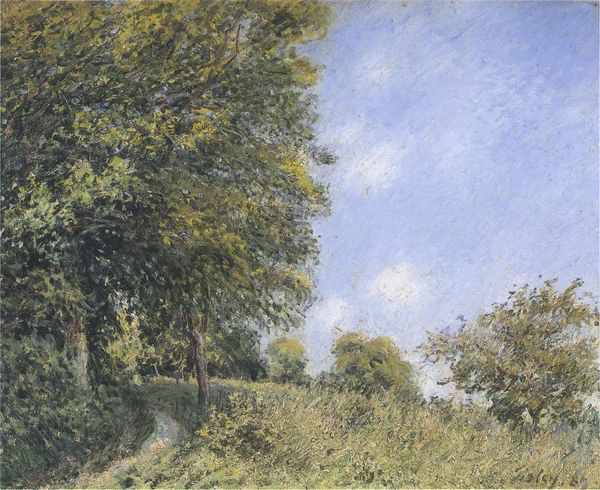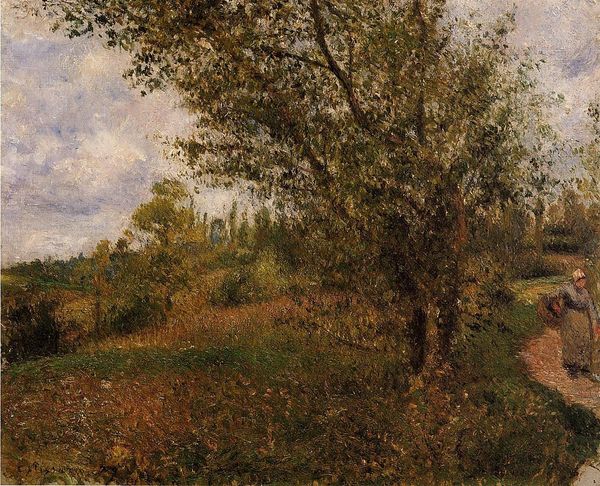
Copyright: Kateryna Bilokur,Fair Use
Curator: Looking at this painting by Kateryna Bilokur from 1955, simply titled "Grove", I'm immediately struck by the stillness of the scene, like time itself has paused on a late summer afternoon. What's your initial impression? Editor: Well, what jumps out to me is how this seemingly idyllic landscape actually reflects Bilokur's complicated relationship with nature and Soviet rural life. It appears quiet on the surface, but knowing her biography, I see something simmering beneath. Curator: Absolutely. There's a tension there. Painted en plein air using oils, Bilokur renders the trees almost as a screen, obscuring, or perhaps safeguarding, something unseen behind them. The colours are gentle, almost pastel. Editor: And the realism is carefully constructed, right? Bilokur’s position as a Ukrainian peasant woman meant she had to negotiate with a world actively attempting to erase her traditions and identity. A grove can symbolize sanctuary but also the limitations imposed on rural women like her. Did the landscape provide comfort or imprisonment, you know? Curator: That resonates. It feels as if she's painting a memory more than an exact replication of a place. Her life circumstances definitely frame her work in terms of longing, for peace, or for a time past, maybe even a protest for what remains to be saved. Editor: Precisely. Her works serve as visual documents of the tension between imposed collectivization and indigenous Ukrainian cultural identity. Think of the symbolism, too – the repetition of tree forms. Were groves, or sacred sites important spaces for rituals tied to fertility, femininity, or perhaps female autonomy, even quiet acts of resistance against the Soviet system? Curator: And her choice to represent trees—strong, living things— perhaps speaks to the resilience she wanted to show...or find within herself, in times when traditions were threatened by state politics. Editor: I think what’s interesting about this painting is precisely the conversation it generates— between our subjective aesthetic appreciation and its rootedness in historical realities. We are both looking at the very same thing and seeing different perspectives, adding richness to its layered complexity. Curator: You’re right! And that quietness becomes something loud. In the space created by those differences and perspectives. The gentle trees become a chorus, telling stories of identity, history, and perseverance.
Comments
No comments
Be the first to comment and join the conversation on the ultimate creative platform.


